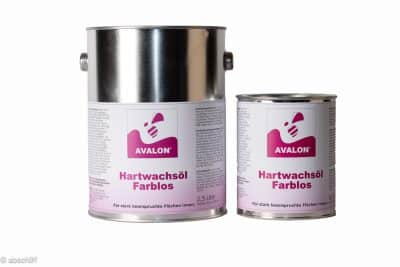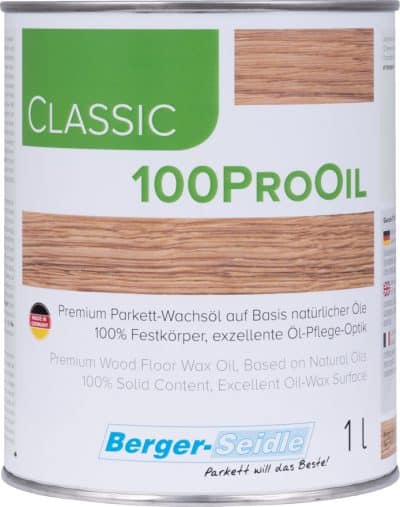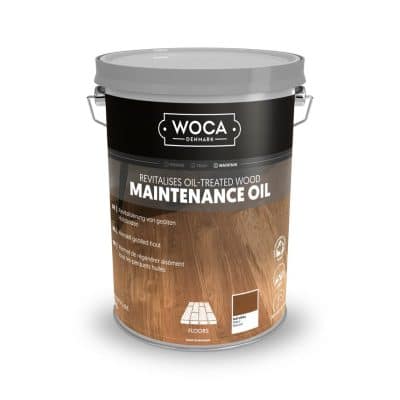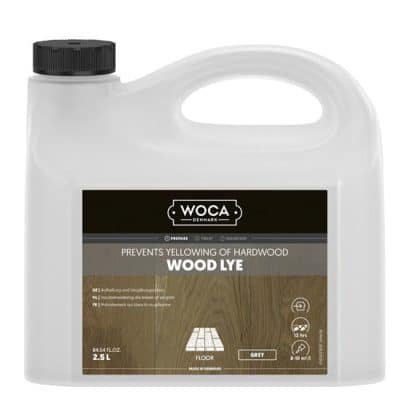Delivery time 2-4 business days

H314 causes severe skin burns and eye damage
Manufacturer:
Berger-Seidle GmbH
Maybachstraße 2
67269 Grünstadt
Germany
Phone: +49 63 59 / 80 05 – 300
Email: info@berger-seidle.de
Website: https://berger-seidle.de/
Classic BioLauge is used for the preparatory lye treatment of wood prior to oiling with Classic BaseOil or prior to the classical soap treatment of coniferous woods with Classic BioSoap. In these processes Classic BioLauge reacts with the natural, biological wood ingredients. After the preparatory lye treatment, the woods absorb Classic BaseOil particularly well; when using Classic BaseOil Color particularly intense colours can be achieved. When using Classic BioLauge on oak wood the wood darkens; after oiling it an antique effect is achieved. When used on coniferous woods the woods darken similar to the natural light aging, thus pre-empting it, minimizing further yellowing.
Degree of gloss
When used as preparatory treatment Classic BioLauge has no influence on the sheen.
Note
– Due to the high ph-value Classic BioLauge is caustic. Care must be taken to protect skin and eyes. Soiled surfaces must be cleaned with water immediately.
– Prior to application it must be expertly assessed whether the floor is fit for lye treatment.
– In case of water and swelling sensitive surfaces (e.g. multilayer hardwood flooring, sanded for renovation, older, very dry hardwood floors, brittle adhesive beds, …) no lye treatment should be done. The water applied to the surface may cause considerable swelling effects and like problems, especially if there are open joints.
– Classic BioLauge can be used to leach oil-dry-inhibitive wood ingredients in exotic woods. In this case the wood is washed with plenty of water after the lye treatment and after that is acidified with 1 part vinegar essence/3 parts water. After drying back the surface can be oiled.
– Every wood species features a specific reaction to lye treatment. Before treating the surface, a test must be done to check whether the desired effects are achieved.
– Because of the lye’s effects wood ingredients may get more soluble. When applying water-borne finishes this may result in mobilization, streaking and overlapping..
– Metals (rails, screws, nails, contaminations) react with the lye and may cause considerable colourations. – The working tools to be cleaned with water. – For stronger effects after drying the lye-treatment may be repeated.
Application
Take care you have a clean and uniformly sanded raw-wood surface. Wood putties and impregnation-inhibiting older surface materials must be cleanly sanded off. Classic BioLauge will be applied with the lye-resistant BergerTool Universal Rolle or a nylon brush in an areally uniform way, the application following the wood’s grain.
Drying
The lye reacts with the wood and its ingredients during the drying. That is why the surface may be worked on not earlier than 24 h assuming 23°C/50% rel. humidity. In case of lower temperatures and higher relative humidity the drying process may take longer.
Consumption
Approx. 100-120 ml/m² or 8–10 m²/l, depending on applied quantity.
Storage / transport
Shelf life of original unopened packing min 24 months provided that material is transported and stored at a cool and dry place. Always hermetically close opened cans.
Classic BioLauge_instruction for use
| Weight | N/A |
|---|---|
| Dimensions | N/A |
| Packaging | 1l |
Related products
Avalon natural oils
Berger-Seidle oils
Classic 100ProOil – deep impregnation ECO oil for wooden floors
Oiled & waxed surfaces
Berger-Seidle oils
Classic BaseOil – COLORLESS oil for varnishing, oiling or waxing
Avalon natural oils
Avalon natural oils

 LV
LV RU
RU











